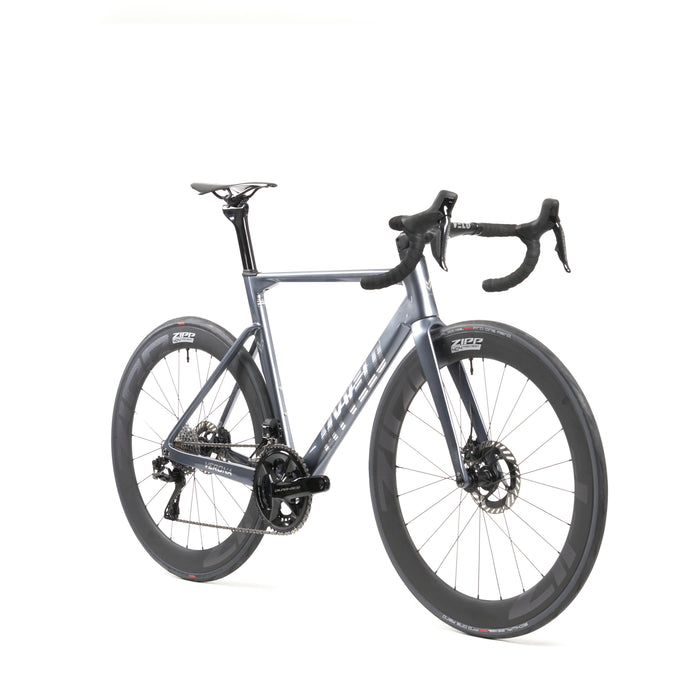
Verona road bike
incl. FREE shipping & free returns

The quill stem is an important part of a bicycle's steering system. It affects the rider's seating position and the bicycle's steering behavior. A longer quill stem results in a more stretched-out seating position, while a shorter quill stem enables a more upright seating position. A steeper angle of the quill stem results in faster steering behavior, while a flatter angle results in more stable steering behavior.
There are different types of quill stems, such as threaded stems that screw directly into the head tube, or ahead stems that sit on top of the head tube and are secured with clamping screws. It is important to choose the right quill stem for your bike frame and handlebars to ensure a safe and comfortable ride.
Overall, the stem is an important part of a bicycle's steering system and an adjustment option for an ergonomically optimized seating position and better handling of the bicycle.
The quill stem is a type of stem that extends vertically upwards from the head tube and has a clamp at the top to hold the handlebars. The quill stem can be made in different lengths and angles to adjust the rider's seating position and affect the bike's steering behavior. By changing the quill stem, the height and reach of the handlebars can also be adjusted.
There are several factors to consider when choosing the right stem:
Advantages
Disadvantages

Fahrradpedale zu wechseln ist eine einfache, aber essenzielle Wartungsaufgabe, die jeder Radfahrer selbst erledigen kann. Ob für ein Upgrade, den Austausch abgenutzter Pedale oder den Wechsel zwischen Klick- und Plattformpedalen – mit der richtigen Anleitung gelingt der Wechsel problemlos.

Für Radfahrer, die ihre Fahrräder bequem transportieren möchten, bieten Fahrradträger eine praktische Lösung. Doch die Auswahl ist groß, und nicht jeder Träger ist gleich. Besonders bei der Wahl zwischen einem Träger für die Anhängerkupplung und einem Modell für die Heckklappe stellen sich viele Fragen. In diesem Artikel werfen wir einen Blick auf die beiden gängigen Typen und vergleichen ihre Vor- und Nachteile.

Die Kettenschaltung ist ein essenzieller Bestandteil des Fahrrads, der für eine reibungslose Kraftübertragung und effizientes Fahren sorgt. Wenn die Gänge nicht sauber schalten, schleift die Kette oder springt von den Ritzeln, kann das Fahrerlebnis erheblich beeinträchtigt werden. Mit ein paar einfachen Handgriffen lässt sich die Kettenschaltung am Fahrrad selbst einstellen.